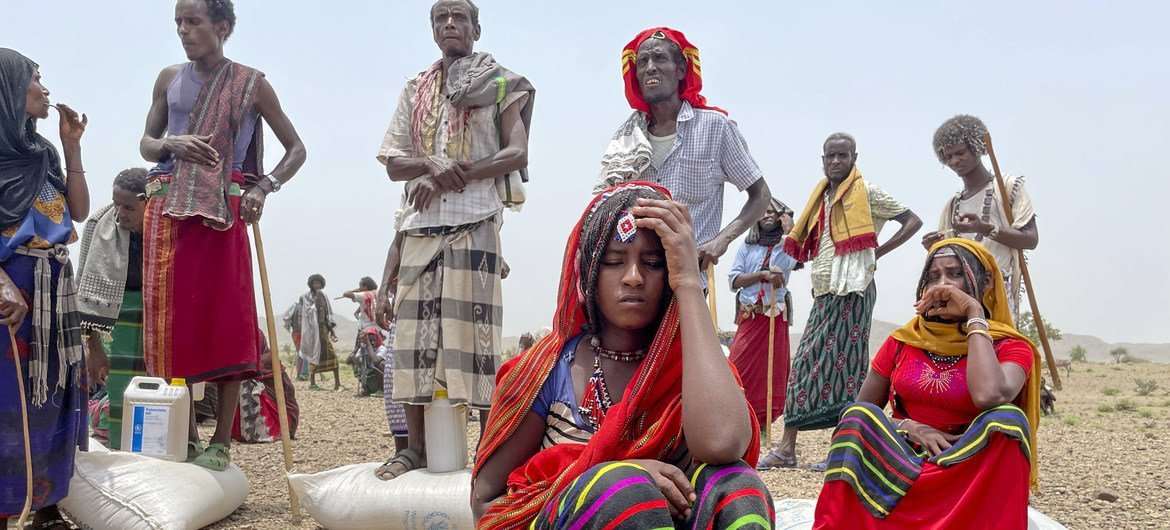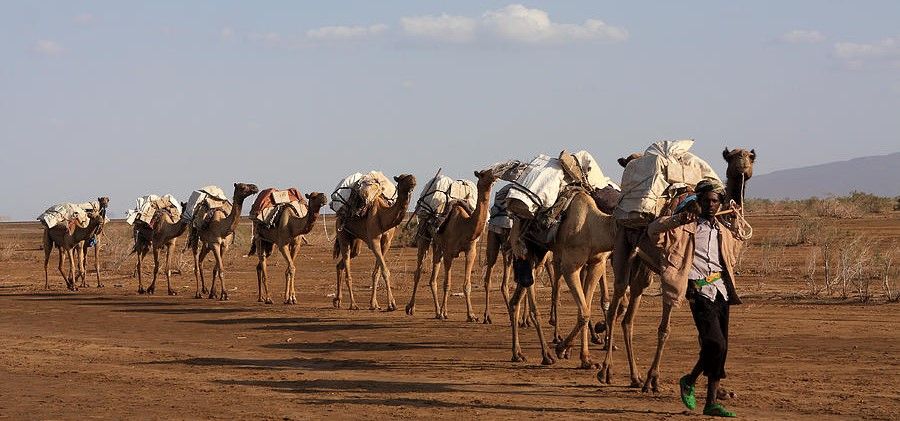The Afar People - History, Culture and Tradition of Ethiopia's Nomadic Warriors
The Afar people, also known as the Danakil, are an enigmatic ethnic group inhabiting the horn of Africa, predominantly in Ethiopia, Eritrea, and Djibouti. Renowned for their resilience, unique cultural practices, and adaptation to harsh desert environments, the Afar have captivated the interest of anthropologists, historians, and travelers alike. In this comprehensive exploration, we delve into the rich tapestry of Afar history, culture, and the challenges they face in the modern era.
Embrace the beauty of cultural diversity and enrich your understanding of the world! Learning about different cultures is an enriching journey that broadens our perspectives, fosters empathy, and fosters respect for one another. It allows us to appreciate the unique traditions, values, and customs that shape the identity of various communities around the globe. Learn about the Hamer Tribe, the Hadza Tribe, the Sami, the Akha People, the Aymaraes, the Kazakh People and the Adivasi on AmplifyGlobe.

Geographical Context
Situated in the Afar Triangle, an arid expanse characterized by volcanic landscapes and extreme temperatures, the Afar people have carved out a distinct way of life amidst challenging conditions. The Triangle, formed by the tectonic plates of Africa and Asia, is a geological marvel and a testament to the Afar's ability to thrive in adversity.
Historical Roots
To comprehend the Afar people, one must delve into their historical roots. The Afar are believed to be descendants of the ancient Cushitic people who have inhabited the region for thousands of years. Evidence of their presence can be traced back to ancient inscriptions, trade routes, and archaeological sites. Over the centuries, the Afar have weathered numerous challenges, including invasions by various external forces and internal conflicts, yet they have managed to maintain their distinct identity.
Nomadic Lifestyle
Central to the Afar way of life is their nomadic lifestyle. The harsh terrain of the Afar region necessitates constant movement in search of water and pasture for their livestock. Transitioning seamlessly between different grazing areas, the Afar are skilled pastoralists, relying on their deep knowledge of the land and its resources. This nomadic existence has fostered a strong sense of independence and self-reliance among the Afar.
Social Structure and Traditions
The Afar society is organized around a clan-based structure, with each clan having its own territory and leadership. The elders, known as the 'Shaykhs,' play a pivotal role in decision-making and conflict resolution. This hierarchical structure ensures a balance of power and fosters unity among the Afar people. Traditional ceremonies, such as the 'Ari,' mark significant life events, and rituals like the 'Daddo' symbolize the coming of age for young Afar men.
Language and Communication
The Afar people communicate in Afaraf, a Cushitic language with distinct dialects. While oral traditions have been the primary means of passing down knowledge and stories, the Afar have also embraced modern communication tools. The preservation of their language is integral to the Afar identity, reflecting a commitment to cultural continuity amid the pressures of globalization.
Challenges and Adaptations
As with many indigenous communities, the Afar face challenges that threaten their traditional way of life. Climate change, political instability, and encroachment on their grazing lands pose existential threats. However, the Afar are not passive victims; they are adept at adapting to changing circumstances. Some have embraced education and seek ways to balance modernity with their cultural heritage, illustrating a dynamic interplay between tradition and progress.
Economic Activities
The economic activities of the Afar people are deeply intertwined with their nomadic lifestyle. Livestock, including camels, goats, and cattle, are the cornerstone of their economy. The Afar engage in trade, exchanging livestock and other goods at local markets. Salt extraction, particularly from the Danakil Depression – one of the hottest and lowest places on Earth – is another vital economic activity. The Afar's resourcefulness in exploiting the unique features of their environment reflects their deep connection with the land.

The Afar and the Salt Pans of the Danakil Depression
One of the most iconic features of the Afar region is the Danakil Depression, a geological marvel that houses extensive salt flats and volcanic activity. The Afar people have harnessed the resources of the Danakil Depression for generations, engaging in traditional salt mining practices. The laborious extraction of salt from the Earth's crust has become an emblematic representation of the Afar's resilience and resourcefulness.
In recent years, the salt pans of Danakil Depression have also become a magnet for tourism. Travelers from around the world are drawn to the surreal landscapes and the unique cultural experience offered by the Afar. While tourism can provide economic opportunities for the community, it also raises questions about the potential impact on their traditional way of life and the delicate balance between cultural preservation and economic development.
Cultural Preservation in the Face of Change
The Afar people's resilience is not just evident in their ability to navigate challenging landscapes but also in their commitment to preserving their cultural heritage. Efforts to document and revitalize traditional practices, including storytelling, dances, and rituals, are underway. Cultural festivals, such as the 'Arafa' and 'Adey' celebrations, serve as reminders of the Afar's rich cultural tapestry.
Education and Empowerment
Recognizing the need for education in a rapidly changing world, the Afar have increasingly embraced formal schooling. Educational initiatives, often in collaboration with non-governmental organizations, seek to strike a balance between modern education and the preservation of traditional knowledge. Empowering the younger generation with skills that can coexist with their nomadic lifestyle ensures a sustainable future for the Afar people.
In the heart of the Afar Triangle, the Afar people continue to navigate the intersection of tradition and modernity. Their nomadic lifestyle, deeply rooted in the arid landscapes of the horn of Africa, is a testament to human adaptability and resilience. As we unravel the layers of Afar history, culture, and challenges, it becomes clear that the preservation of their unique way of life requires a delicate dance between embracing change and safeguarding tradition. The Afar people stand at the crossroads of a rapidly evolving world, and their journey is a compelling narrative of strength, diversity, and the enduring spirit of a nomadic community in the 21st century.